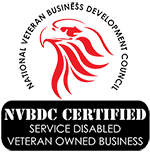
Mastering Protection: How to Conduct a Comprehensive Corporate Security Risk Assessment
In an ever-changing world, corporations face an array of security risks that can threaten their assets, data, and reputation. To stay ahead of potential threats, conducting a comprehensive corporate security risk assessment is crucial. This proactive approach enables businesses to identify vulnerabilities, prioritize security measures, and implement effective protocols. In this blog post, we’ll guide you through the steps of conducting a thorough risk assessment to protect your organization and its stakeholders.
Laying the Foundation – Understanding Corporate Security
Before diving into the assessment process, it’s essential to understand the importance of corporate security and the role it plays in safeguarding your organization. Corporate security services encompass various solutions, including business security solutions, cybersecurity for businesses, and physical security measures. By integrating these elements, corporations can create a robust security framework tailored to their unique needs and challenges.
Identifying Potential Risks and Threats
The first step in conducting a corporate security risk assessment is identifying potential risks and threats. Consider both internal and external factors that could pose a risk to your organization. External threats may include cyber-attacks, natural disasters, and geopolitical risks, while internal risks might involve employee negligence or data breaches. Engage in security assessment and consulting to gain valuable insights and expertise in identifying risks specific to your industry and business.
Evaluating Vulnerabilities and Impact
Once potential risks are identified, evaluate the vulnerabilities within your organization that could be exploited by these threats. This step involves conducting a thorough review of existing corporate security protocols, access control systems, and employee safety training. Consider the impact of each potential threat on business operations, data integrity, and employee safety. By understanding vulnerabilities and potential consequences, you can prioritize your security efforts effectively.
Developing a Tailored Security Plan
With a comprehensive understanding of potential risks, vulnerabilities, and impact, it’s time to develop a tailored security plan. Corporate security protocols are essential in outlining how your organization will respond to different security scenarios. Address cybersecurity for businesses, workplace safety measures, and access control systems, while also incorporating executive protection for corporations and employee background checks when necessary. Ensure that your plan aligns with your corporate security policies and industry regulations.
Implementing and Continuously Improving
The final step in the process is to implement your security plan and continuously improve it over time. This involves integrating security awareness programs, physical security measures, and security monitoring and surveillance systems. Consider intrusion detection systems and security guards and personnel as part of your security technology integration. Conduct regular security risk assessments to adapt your security plan to evolving threats and emerging technologies.
A comprehensive corporate security risk assessment is a powerful tool in protecting your organization from potential threats. By understanding the importance of corporate security services and conducting a thorough assessment, you can develop a tailored security plan that mitigates risks and safeguards your organization’s success. Stay vigilant and proactive in implementing security protocols, fostering a security-conscious culture, and continuously improving your security measures to stay ahead of potential threats.



